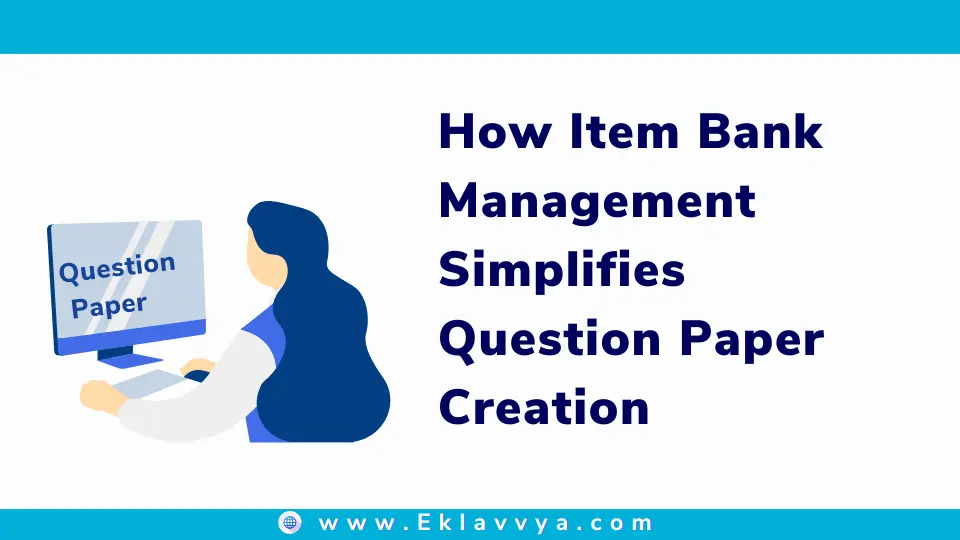
Article Contents
Introduction
Creating well-constructed question papers for exams and assessments is important for several reasons.
Well-constructed question papers help to ensure the fairness and reliability of the assessment process. This is because the questions are carefully selected to test the knowledge and skills of the students in a consistent manner, and to minimize the potential for bias or inconsistency.
It helps to improve the validity of the assessment process. This means that the questions are relevant to the material being tested and accurately reflect the learning outcomes of the course or program. This is important because it helps to ensure that the results of the assessment are meaningful and accurately reflect the student’s knowledge and skills.
Item bank management software can help streamline the process of creating well-constructed question papers by providing a centralized database of pre-written questions and other assessment materials. This can help to reduce the time and effort required to create new question papers, as well as ensure that the questions are of high quality and aligned with the learning outcomes of the course or program.
Additionally, item bank management software can help to facilitate the review and editing of question papers, as well as the tracking and management of the questions and other assessment materials.
Overview of item bank management software
Item bank management software is a type of software that is used to create, store, and manage a large collection of pre-written questions and other assessment materials, known as an item bank. These questions and materials are typically used in exams and assessments, such as tests, quizzes, and exams, to assess the knowledge and skills of students or employees.
Key features and capabilities of item bank management software:
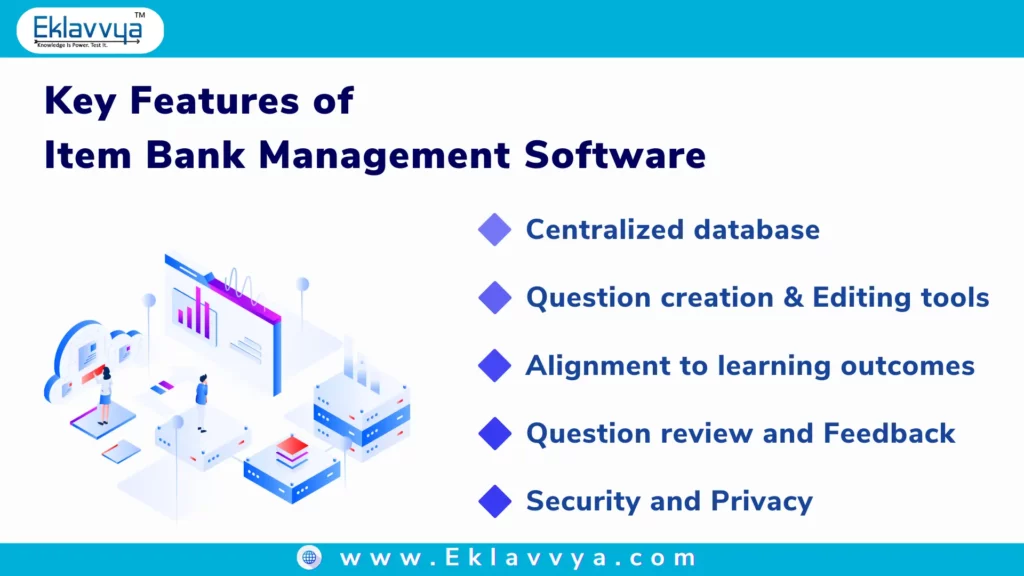
1. Centralized Database of Questions
Item bank management software provides a centralized database of pre-written questions and other assessment materials, which can be accessed and used by educators and assessment administrators.
2. Question Creation and Editing Tools
Item bank management software often includes tools for creating and editing questions and other assessment materials, such as templates and formatting tools.
You can easily manage the question banks with their classification and Create/ Edit Questions. While defining questions you can define various attributes like Subject, Topic, Question Type, Marks, Assessment Objective, Level of the Question, Domain, Learning Outcome, Target Grade etc.
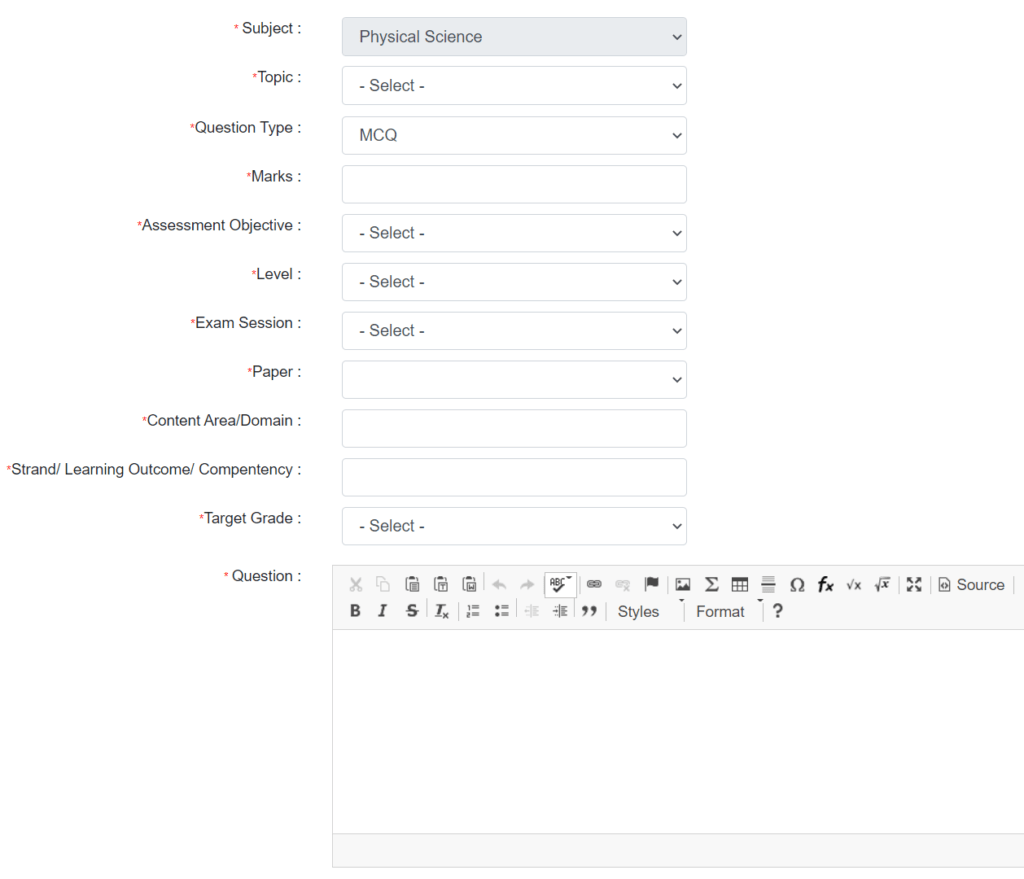
3. Alignment to Learning Outcomes
Item bank management software can help ensure that the questions and other assessment materials are aligned with the learning outcomes of a course or program.
4. Question Review and Feedback
Item bank management software may include features for reviewing and providing feedback on questions, as well as tracking the status of each question.
5. Security and Privacy
Item bank management software may include security and privacy features to protect the confidentiality of the questions and assessment materials, as well as the results of the assessments.
Steps for using item bank management software to create question papers
Setting up an item bank and adding questions–
Setting up an item bank and adding questions is an important step in the process of digitizing your question bank.
Here are some additional tips to consider when setting up your item bank and adding questions:
Create a clear and organized structure for your subjects and topics. This will make it easier to navigate and find questions in your item bank.
Use descriptive and concise names for your subjects and topics to make it easier for users to understand what is covered in each section.
Consider using tags or keywords to help users easily find questions on specific topics or themes.
When adding questions to your item bank, be sure to include all relevant information, such as the question text, answer choices, correct answers, and any associated explanations or resources.
Make use of the unique identifier feature to keep track of your questions and easily locate them for future reference. This is especially useful if you plan to revise or update your questions based on changes in the syllabus or education trends.
Consider including metadata, such as difficulty level and learning objectives, to help users better understand the context and purpose of each question.
Overall, it is important to take the time to properly set up your item bank and add questions in a structured and organized manner. This will make it easier to use and manage your item bank, and ultimately help you to deliver better learning experiences to your students.
Selecting and Organizing Questions for a Question Paper
An item bank management system can be a powerful tool for creating and managing exams and assessments. One of the key features of these systems is the ability to define exam patterns or schemas that can be used to generate unique exam papers.
Here are some additional benefits of using an item bank management system to define exam patterns:
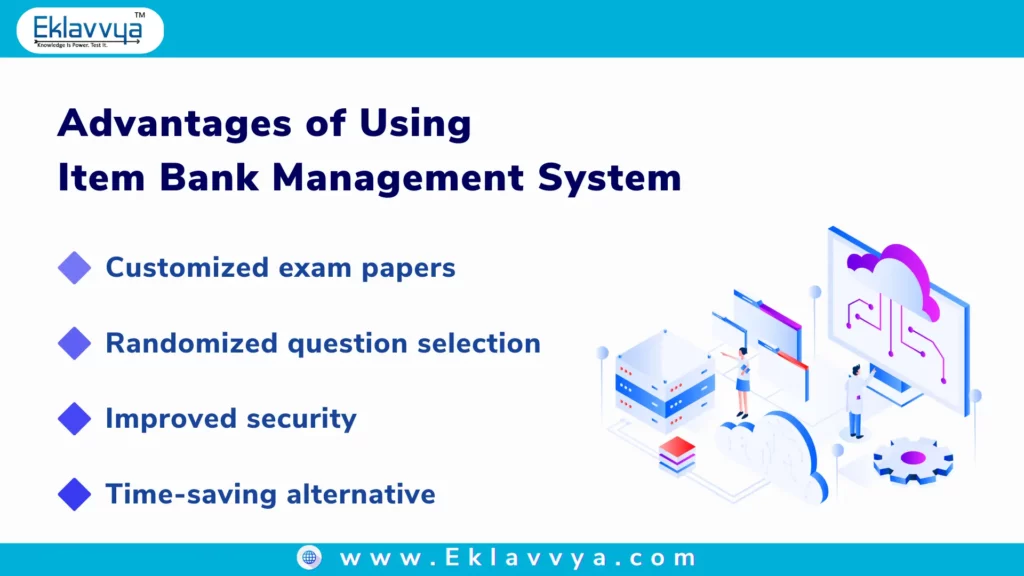
1. Customized Exam Papers
With an item bank management system, you can create exam patterns that match the specific requirements of your syllabus, including the difficulty level and question pattern. This allows you to create exams that are tailored to the needs of your students.
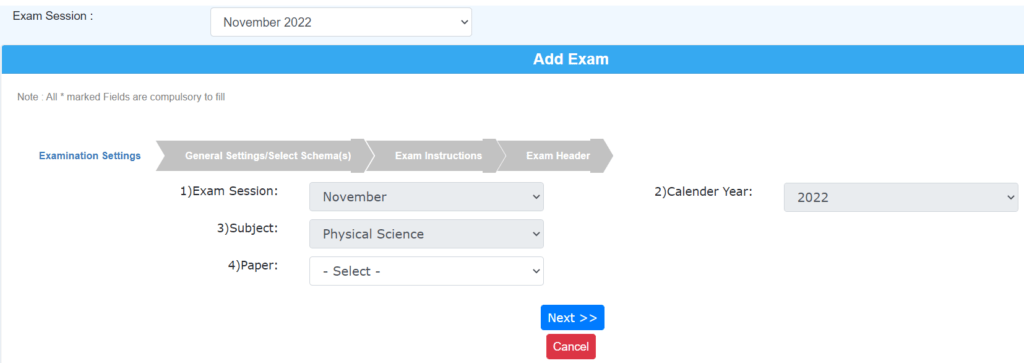
2. Randomized Question Selection
The item bank management system can use the exam pattern to randomly select questions from the question bank, ensuring that each exam paper is unique and does not contain any repeated questions.
3. Improved Exam Security
By generating unique exam papers, you can help to prevent cheating and ensure the integrity of your exams.
4. Time-Saving
Using an item bank management system to create exam papers can save you time and effort, as you do not need to manually select and organize questions.
Overall, the ability to define exam patterns in an item bank management system can be a valuable tool for creating customized, secure, and efficient exams and assessments.
Manage Role Based Access Control
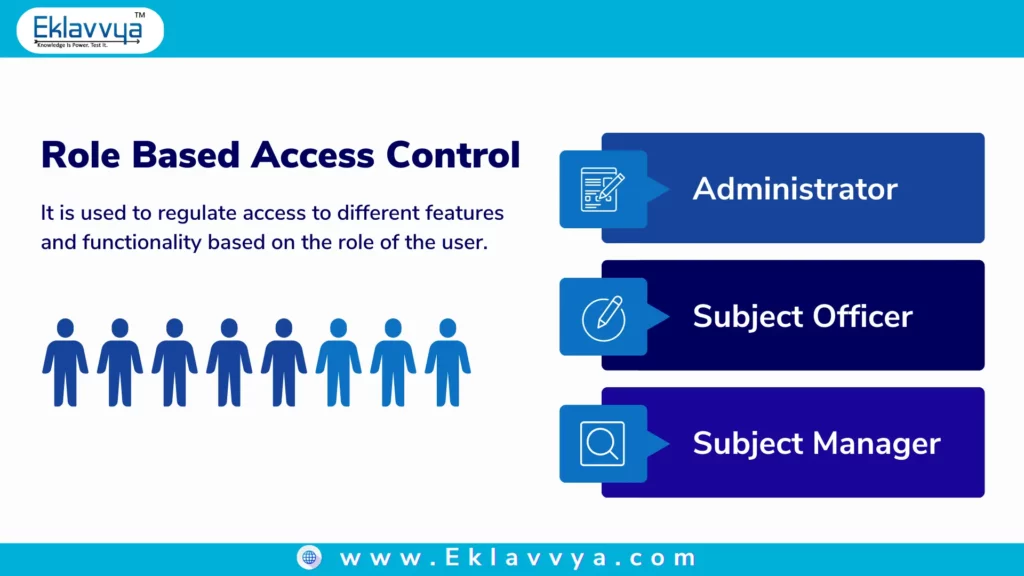
Let’s understand how role-based access controls are provided for item bank management systems.
In an item bank management system, role-based access control (RBAC) is used to regulate access to different features and functionality based on the role of the user. RBAC is an effective way to ensure that users only have access to the tools and resources they need to perform their job tasks, and it helps to maintain the security and integrity of the system.
Administrator
The administrator role would have access to all features, including the ability to manage sessions, create and update subjects and topics, create and update user details, upload documents, and view all questions. The item writer role would only have access to create and update objective and subjective questions for a specific subject.
Subject Officer
The subject officer role would have access to create exam papers and schemas, add and edit questions in exam papers, and view question papers and mark structures. The reviser role would be able to read and comment on assigned exam papers, with the subject manager and subject officer noting those comments.
Subject Manager
The subject manager role would have visibility into all stages of assigned exam papers, while the director role would be able to view all stages of all exam papers. The senior manager role would be able to see exam papers in the revision stage.
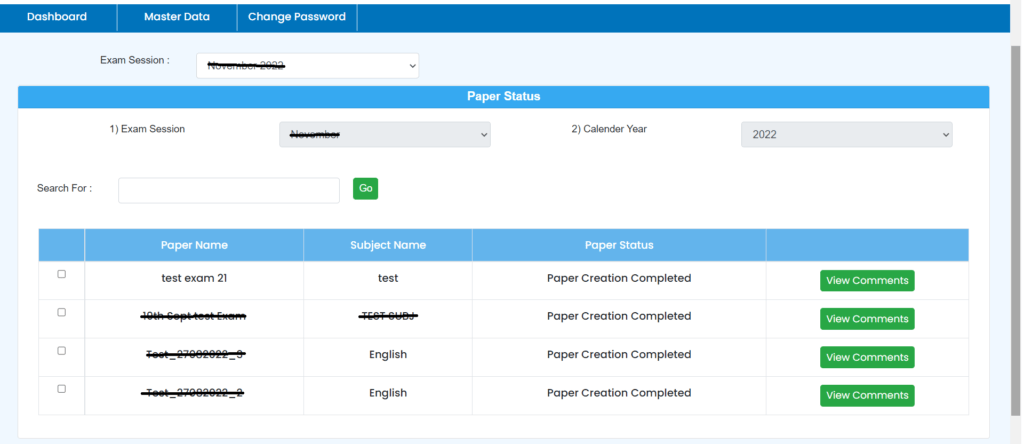
Overall, the use of RBAC in an item bank management system helps to ensure that users only have access to the features and functionality they need to perform their job tasks, while also maintaining the security and integrity of the system.
Best practices for using item bank management software
Here are some additional best practices for using item bank management software:
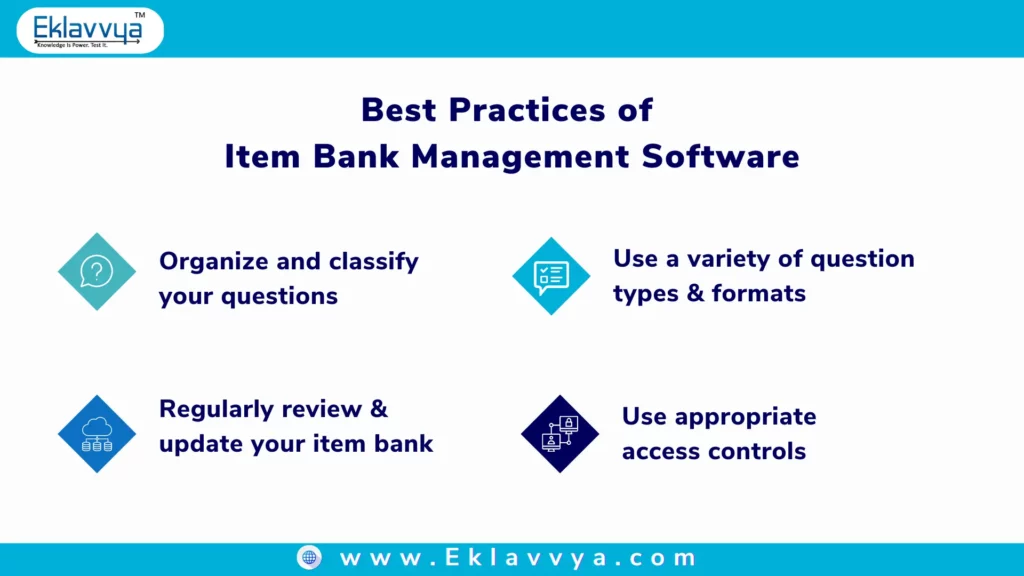
1. Organize and Classify your Questions
Properly organizing and classifying your questions will make it easier to find and use them in exams and assessments. Consider using tags, keywords, and metadata to help classify and categorize your questions.
2. Use a Variety of Question Types and Formats
In order to create a balanced and engaging exam or assessment, it is important to use a variety of question types and formats. This may include multiple choice, true/false, short answer, essay, and other formats.
3. Regularly Review and update your Item Bank
It is important to regularly review and update your item bank to ensure that the questions are accurate and relevant. This may include revising or retiring outdated questions, and adding new questions to reflect changing educational trends or syllabus updates.
4. Use Appropriate Access Controls
To ensure the security and integrity of your item bank, it is important to use appropriate access controls. This may include role-based access controls, which allow you to regulate access to different features and functionality based on the user’s role.
By following these best practices, you can effectively use an item bank management software to create high-quality exams and assessments for your students
Conclusion
In conclusion, using item bank management software can offer a number of benefits for generating exam papers. By using an item bank management system, you can create customized exam papers that match the specific requirements of your syllabus, including the difficulty level and question pattern.
You can also use the system to randomly select questions from your question bank, ensuring that each exam paper is unique and does not contain any repeated questions. This can help to improve the security and integrity of your exams, while also saving you time and effort.
If you are considering using an item bank management software to create exam papers, we encourage you to try it out. The software can simplify and streamline the process of generating exam papers, helping you to create high-quality and engaging assessments for your students.
With its many features and benefits, an item bank management system is a valuable tool for any educator looking to improve their exam and assessment creation process.
An item bank management software is a tool that allows you to create, store, and manage a database of exam questions, answers, and other relevant information. This can include multiple choice, true/false, short answer, and other types of questions.
An item bank management software typically consists of a database of exam questions and answers, as well as tools and features for creating, organizing, and managing the questions. This may include features such as tagging and categorization, metadata, and exam pattern creation tools.
Some of the benefits of using an item bank management software include the ability to create customized exam papers that match specific syllabus requirements, the ability to randomly select questions from the question bank to create unique exam papers, improved exam security, and time-saving by streamlining the process of creating exam papers.
The process for implementing an item bank management software will depend on the specific software and your organization’s needs. Generally, you will need to purchase or subscribe to the software, install it on your computer or network, and set up the necessary hardware and resources. You will also need to create and populate your question bank, and set up any necessary access controls and security measures. It may be helpful to work with a vendor or provider to ensure a smooth implementation process.
Many item bank management software providers offer customization options to allow you to tailor the software to your specific needs. This may include customizing the user interface, adding custom features or integrations, and integrating with other tools or systems. It is important to discuss your customization needs with the software provider to ensure that they can meet your requirements.


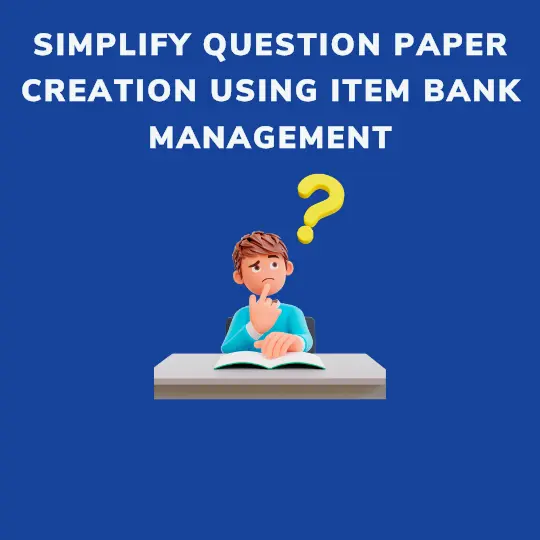

![How Government-Led Exams at 250+ Locations Are Setting New Standards of Integrity [Case Study]](https://www.eklavvya.com/blog/wp-content/uploads/2024/04/Enhancing-Exam-Integrity-Government-Certification-in-250-Locations-150x150.webp)
![Transforming Central Govt. Exams Evaluation: How Onscreen Marking is Leading the Charge [Case Study]](https://www.eklavvya.com/blog/wp-content/uploads/2024/04/How-Onscreen-Marking-Revolutionized-Central-Govt-Exams-Case-Study-1-150x150.webp)



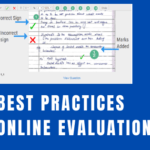










![How Onscreen Marking Revolutionized Central Govt Exams [Case Study]](https://www.eklavvya.com/blog/wp-content/uploads/2024/04/How-Onscreen-Marking-Revolutionized-Central-Govt-Exams-Case-Study-1-300x300.webp)
